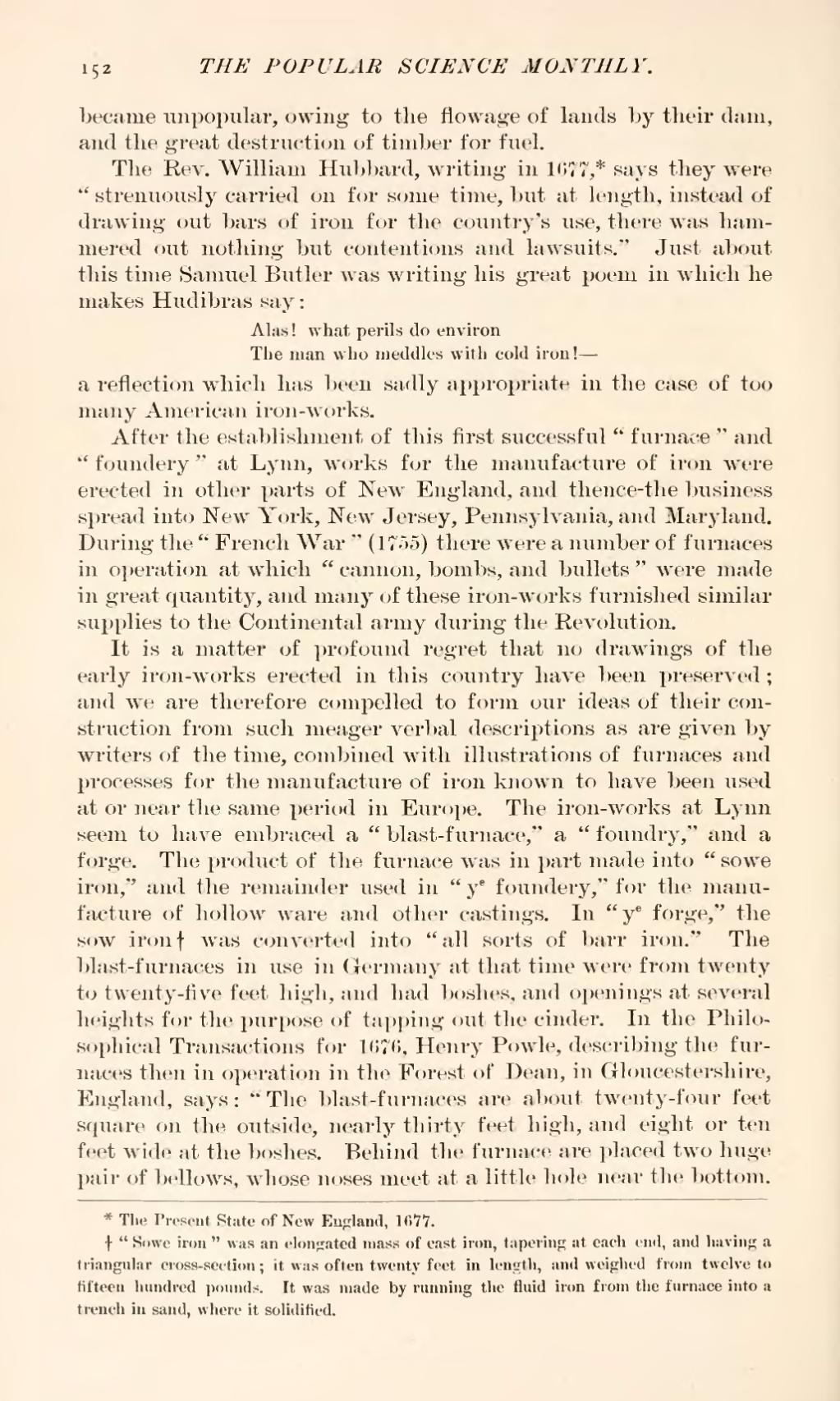became unpopular, owing to the flowage of lands by their dam, and the great destruction of timber for fuel.
The Rev. William Hubbard, writing in 1677,[1] says they were "strenuously carried on for some time, but at length, instead of drawing out bars of iron for the country's use, there was hammered out nothing but contentions and lawsuits." Just about this time Samuel Butler was writing his great poem in which he makes Hudibras say:
Alas! what perils do environ
The man who meddles with cold iron!—
a reflection which has been sadly appropriate in the case of too many American iron-works.
After the establishment of this first successful "furnace" and "foundery" at Lynn, works for the manufacture of iron were erected in other parts of New England, and thence-the business spread into New York, New Jersey, Pennsylvania, and Maryland. During the "French War" (1755) there were a number of furnaces in operation at which "cannon, bombs, and bullets" were made in great quantity, and many of these iron-works furnished similar supplies to the Continental army during the Revolution.
It is a matter of profound regret that no drawings of the early iron-works erected in this country have been preserved; and we are therefore compelled to form our ideas of their construction from such meager verbal descriptions as are given by writers of the time, combined with illustrations of furnaces and processes for the manufacture of iron known to have been used at or near the same period in Europe. The iron-works at Lynn seem to have embraced a "blast-furnace," a "foundry," and a forge. The product of the furnace was in part made into "so we iron," and the remainder used in "ye foundery," for the manufacture of hollow ware and other castings. In "ye forge," the sow iron[2] was converted into "all sorts of barr iron." The blast-furnaces in use in Germany at that time were from twenty to twenty-five feet high, and had boshes, and openings at several heights for the purpose of tapping out the cinder. In the Philosophical Transactions for 1676, Henry Powle, describing the furnaces then in operation in the Forest of Dean, in Gloucestershire, England, says: "The blast-furnaces are about twenty-four feet square on the outside, nearly thirty feet high, and eight or ten feet wide at the boshes. Behind the furnace are placed two huge pair of bellows, whose noses meet at a little hole near the bottom.
- ↑ The Present State of New England, 1677.
- ↑ "Sowe iron" was an elongated mass of cast iron, tapering at each end, and having a triangular cross-section; it was often twenty feet in length, and weighed from twelve to fifteen hundred pounds. It was made by running the fluid iron from the furnace into a trench in sand, where it solidified.
